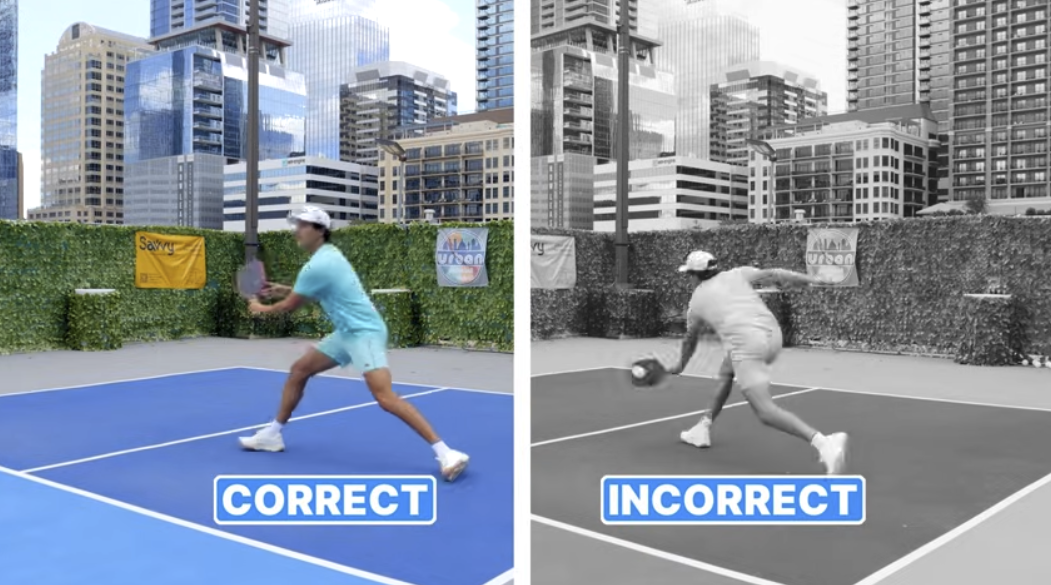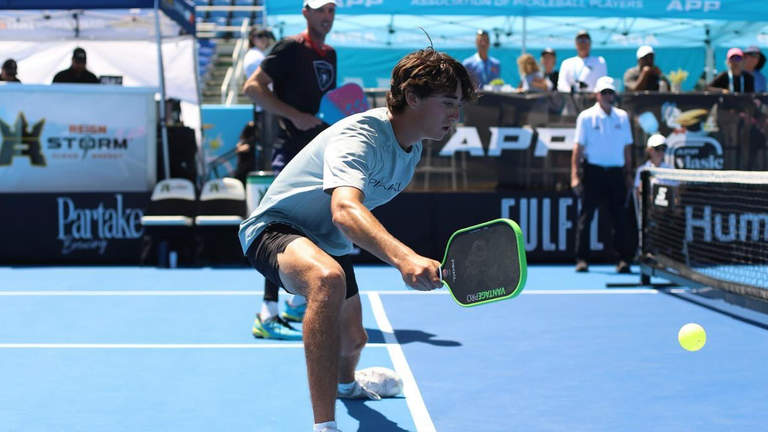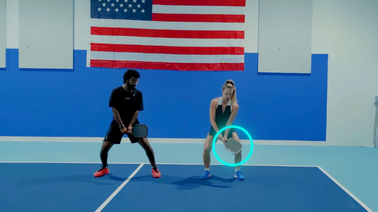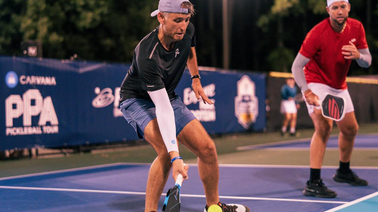
Win the Transition Zone: The Modern Pickleball Guide to Midcourt Aggression
While traditional coaching has long emphasized getting to the kitchen line as quickly as possible, modern pros are turning midcourt aggression into unexpected offensive opportunities
Ever notice how most pickleball players treat that awkward space between the baseline and kitchen like it's radioactive? They rush through it, desperate to reach the kitchen line, often making panicky shots along the way.
But what if that so-called "no man's land" could actually become your greatest offensive weapon?
Love pickleball? Then you'll love our free newsletter. We send the latest news, tips, and highlights for free each week.
That's exactly what pro player Jack Munro explores in his recent YouTube masterclass, where he completely flips conventional wisdom about the transition zone on its head.
The Transition Zone Mindset Shift
The first mistake most players make? Even calling it "no man's land" sets you up for failure.
That negative label creates a psychological barrier that makes players rush through the area rather than seeing it as a position of opportunity.
Munro's approach represents a growing shift in professional pickleball strategy.
While traditional coaching has long emphasized getting to the kitchen line as quickly as possible, modern pros like Gabe Tardio, Hayden Patriquin, and Riley Newman are demonstrating how midcourt aggression can disrupt opponents and create unexpected offensive opportunities.
Ready Position: The Slinky Drill
One of the most practical tips Munro shares involves adjusting your paddle height based on your court position, what he calls the "slinky drill."
"When I'm at the kitchen, I'm going to have a higher ready position, anticipating chest-high attacks," Munro demonstrates.
"But as I move back towards the baseline, those speed-ups that come at my chest are now going to sail out."
The ideal ready position in the transition zone? Hip level or slightly below. This positioning prepares you for the most likely incoming shots while maintaining balance and mobility.
Munro emphasizes staying on the balls of your feet rather than your heels, a small adjustment that dramatically improves your ability to move in all directions. He recommends using the split step right before your opponent makes contact with the ball to maintain this athletic stance.
Grip Choices: Finding Your Balance
Your grip choice significantly impacts your transition zone effectiveness. Munro breaks down three main options:
- Continental (Handshake) Grip: The most balanced option with no favoritism toward forehand or backhand. Great for consistent resets with either hand.
- Eastern Grip: Slightly more aggressive on the forehand side but requires a two-handed backhand to avoid pop-ups.
- Semi-Western Grip: The most aggressive forehand option but demands excellent technique and a two-handed backhand.
"Personally, I like to go with an eastern grip from the baseline all the way to the kitchen because it gives me the most aggression while also feeling consistent with my two-handed backhand," Munro shares.
He notes an important technical detail: the more extreme your grip, the more you'll need to hinge your wrist backward when hitting forehands in the transition zone to get proper lift over the net.

Old School vs. Modern Strategy
Perhaps the most revolutionary aspect of Munro's teaching is his breakdown of two competing philosophies about transition zone play:
Old School Approach (3.5 and Below)
This traditional method, still taught by many country club pros, emphasizes:
- Reset everything
- Prioritize the soft game
- Use the transition zone only to hit soft shots into the kitchen
- Focus on consistency over aggression
Modern Approach (4.0+)
This emerging strategy, used by top pros, focuses on:
- Selective aggression
- Building pressure from midcourt
- Taking balls out of the air whenever possible
- Making opponents uncomfortable even when they're at the kitchen line
"If the ball bounces, then reset it. If you can take the ball out of the air, then attack it."
This selective aggression creates what Munro calls "free rides to the kitchen" because opponents become hesitant to keep you back, fearing your aggressive swinging volleys and backhand flicks.
The Seesaw Effect: Predicting Your Opponent's Next Shot
One of the most fascinating tactical insights Munro shares is the "seesaw effect," a simple principle for anticipating your opponent's next shot based on paddle position:
- If your opponent's paddle is high, your paddle should be low
- If your paddle is high, expect your opponent's paddle to be low
- If your opponent's paddle is centered, keep yours centered too
"For example, if my opponent has an overhead and I'm in the midcourt, I know that they're trying to hit it down at the ground towards my feet. So, my paddle is going to be as far towards the ground as possible because I know that's where they're aiming," Munro demonstrates.
This predictive technique helps you position your paddle optimally before your opponent even hits the ball, a small advantage that can make a huge difference in fast exchanges.
Five Common Transition Zone Mistakes
Munro identifies these critical errors that hold players back:
- Calling it "no man's land" - This negative mindset makes you rush through rather than weaponize the zone.
- Always resetting - Being too passive misses offensive opportunities when balls can be taken out of the air.
- Being flatfooted - Standing on your heels makes you reactive rather than proactive.
- Wrong grip/technique - Especially with extreme grips, failing to close the paddle face creates pop-ups.
- Attacking every ball - Indiscriminate aggression leads to unforced errors; focus on speeding up balls taken out of the air.

Why This Matters for Your Game
By reframing the transition zone as an offensive opportunity rather than a danger zone, players can develop a more complete game.
"The goal isn't just to use the transition zone to get to the kitchen," Munro concludes.
"It's to create offense and weapons while getting there. Make sure that by being aggressive, your opponents feel your pressure and feel uncomfortable even though they're set at the kitchen line."
This philosophy represents the evolution of pickleball strategy at the highest levels. While traditional teaching emphasized kitchen line dominance above all else, modern pros are showing how pressure can be applied from all court positions.
For recreational players looking to break through plateaus, mastering the transition zone might be the missing piece. Instead of rushing through it, learning to create offense from this position adds an entirely new dimension to your game, one that opponents at your level likely haven't developed.

Love Pickleball? Join 100k+ readers for free weekly tips, news & gear deals.
Subscribe to The DinkGet 15% off pickleball gear at Midwest Raquet Sports










